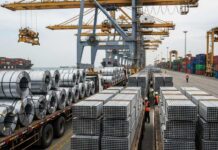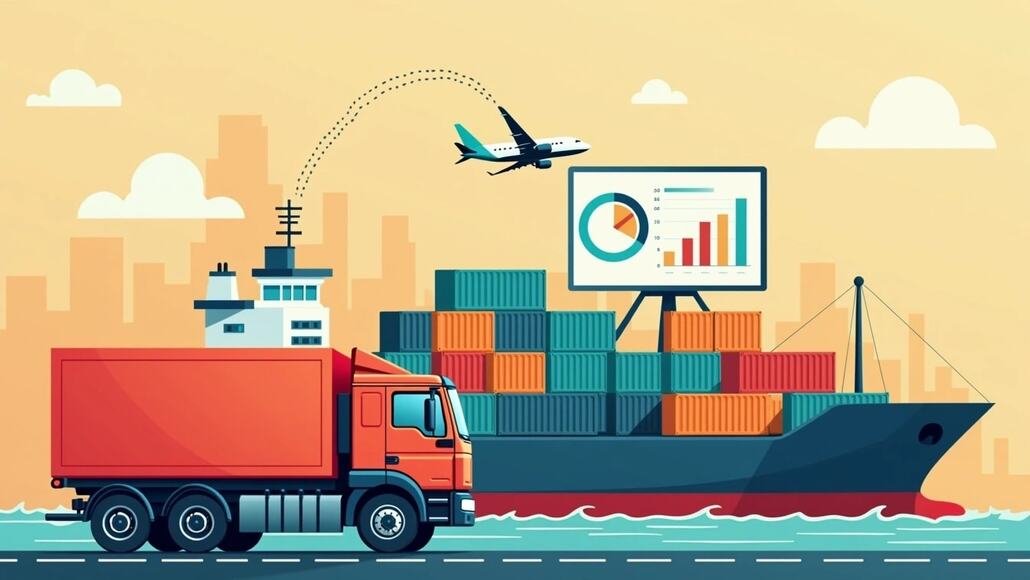Imagine you are building yourself a new house – you need water lines in many rooms. Will it really make sense to go ahead and hire one plumber to put a line to the kitchen, another one for the restroom, another for the master bath, and another for the laundry room? Of course not. It would be terribly incapable and inefficient, as well as expensive and inconvenient, if one does so.
This can be said for the global supply chain as well. Supply chain companies often compete for the same resources. Be it labor trucks on the road or warehouse space. As the packaging spectrum, when it comes to e-commerce, continues to rise high, doesn’t it make more sense to take charge and look into cross-industry partnerships over competition?
Giving inefficiencies a thought again
So, what often takes place when business leaders roll out tactics so as to streamline as well as digitize the overall supply chain? They are going to focus on specific links within the chain rather than on the big picture. The fact is that they default to linear thinking, and because of this, the solutions are often not practical.
Global Supply chains happen to be sophisticated networks when it comes to interactions that more closely resemble intricate physics rather than simple linear paths. In spite of the good intentions, numerous initiatives often fall short because they neglect this complexity. It is worth noting that when organizations stress internal optimization, they go on to lose the overall big picture. This can as well lead to underutilization, with vehicles as well as warehouses often functioning at less than their actual capacity.
It so happens that every company works in isolation, thereby hoping to dominate its segment when it comes to that particular market. Rather than seeing success, these companies often end up being inefficient.
The pandemic put forth this susceptibility. With container backlogs as well as cruise shortages, one saw firsthand how the traditional global supply chains could fall under pressure, large shippers bloated problems by way of monopolizing the resources, and because of this, squeezed out smaller shipments. This chaotic time highlighted the requirement for networks that go on to prioritize shared resources as well as information, optimizing volumes and also density for everyone who is involved.
The case pertaining to collaborative networks
A transition towards collaborative networks in which companies share information as well as resources can also redefine optimization of resources, thereby moving away from a closed system to an open network wherein supply and demand both are met in a more effective way. The telecom as well as energy industries are in fact already into this by way of pooling resources and also leveraging interoperability. These sectors happen to operate efficiently, sacrificing control as far as their business is concerned.
There is a possibility that the concept of coordinating stakeholders when it comes to an open market may as well seem pretty daunting or even, for that matter, impossible; however, it will be compulsory in keeping up with the rising demand worldwide. Low or inefficient utilization is indeed unsustainable if one wants to keep the flow of goods moving on par with the rise of the Aparcel-lypse with parcel volumes all set to go beyond the current capabilities of the logistics.
The Aparcel-lypse
As per Mordor Intelligence, the e-commerce market will surge from $78 billion in 2025 to almost $150 billion by the end of the decade. As per the Digital Commerce 360 report, e-commerce sales have not had a year-over-year decline for almost 16 years, and that in the fourth quarter of 2024, e-commerce sales almost accounted for 25% of the total retail sales across the US.
Interestingly, in 2021, the supply chain disruptions cost the US $228 million on average. For business leaders, when it comes to distribution centers, increasing the efficiency happens to be a top priority.
Digital trends in operation survey for 2024 by PWC reported that 45% of the supply chain CEOs believe that their company will not be viable. In 10 years, if it stays on the present path, nearly 70% of the CEOs say that technology investments have not yet delivered the anticipated outcomes.
Embracing transition
It is well to be noted that resistance to a collaborative sort of an approach often remains quite a significant hurdle to creating a more collaborative industry model. Many companies erroneously equate control with that of market power, but no one company happens to own their supply chain. No singular company, be it big or powerful, owns all the warehouses or freight liners or distribution centers or even trucks, roads, and ports.
Without reconsidering what exactly supply chain ownership means, businesses have gone to risk sticking to expensive and incapable practices. However, the true leverage happens to come from shared capacity as well as a community-driven approach.
Apart from a shift in the mindset, business leaders are also required to leverage AI technology. The fact is that AI can enable seamless communication, make sense of data, and at the same time automate previous manual tasks. It can also help to democratize the decision-making scenario just so that the individual goals get in sync with overall objectives. It can also make sure that no singular big shot has an outsized influence.
A new spectrum when it comes to collaborations
Embracing a community mindset isn’t an option anymore. It has now become a necessity. One needs to look into collaborations, make sure that the role of AI is transparent, and also gauge that collective objectives can go on to benefit individual success. Through creating shared networks that go on to empower efficiency and innovation on a wider scale, one can mold a future in which global supply chains are commercially viable and environmentally sustainable as well as equipped to meet the demand of the rising digital world.































